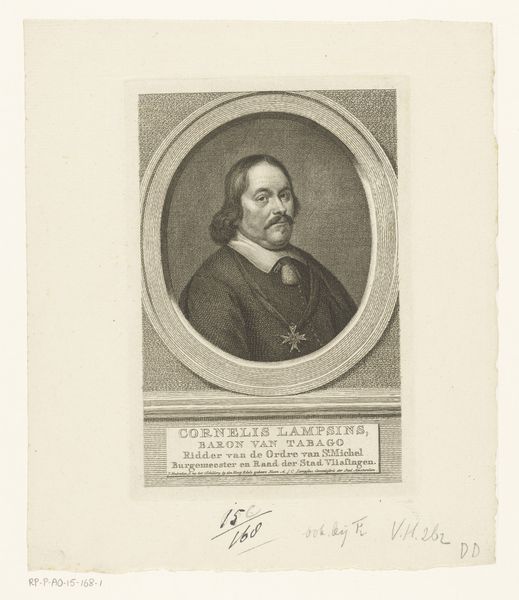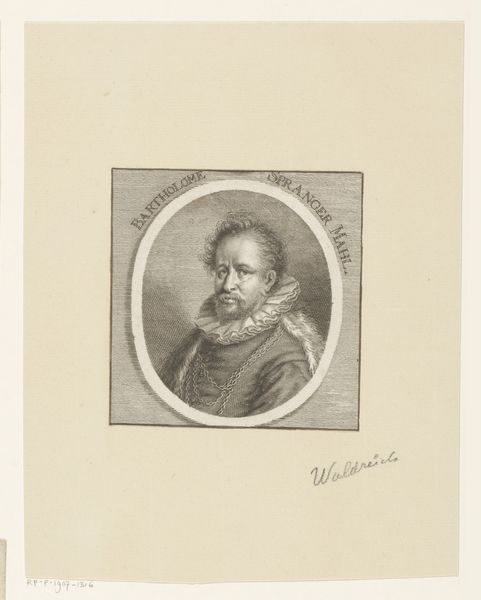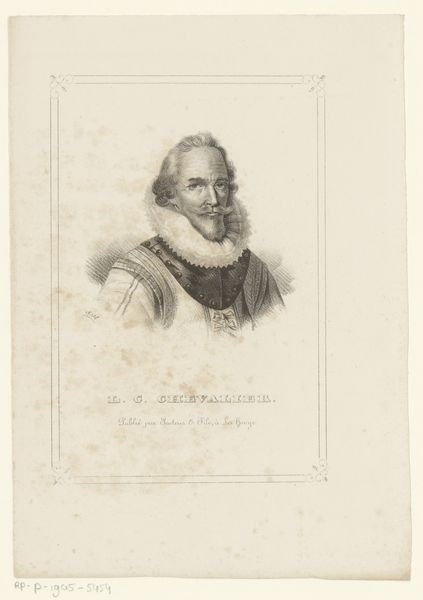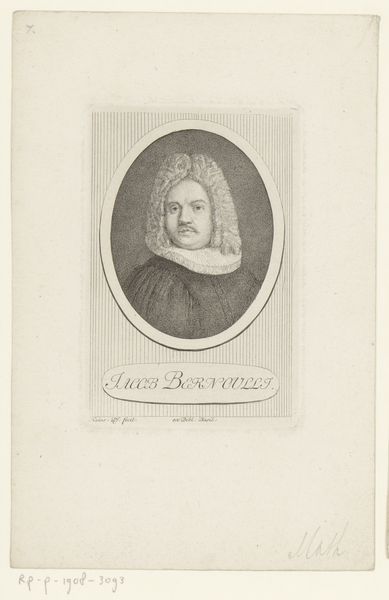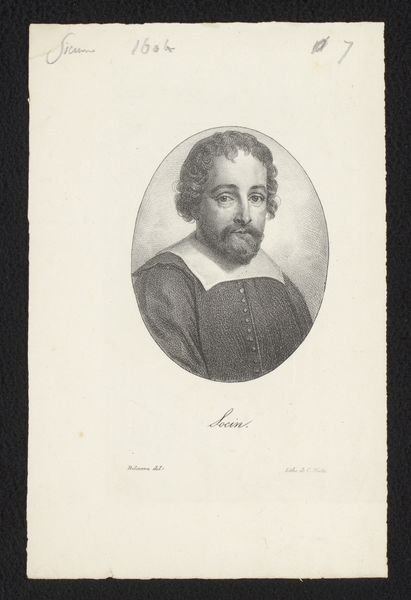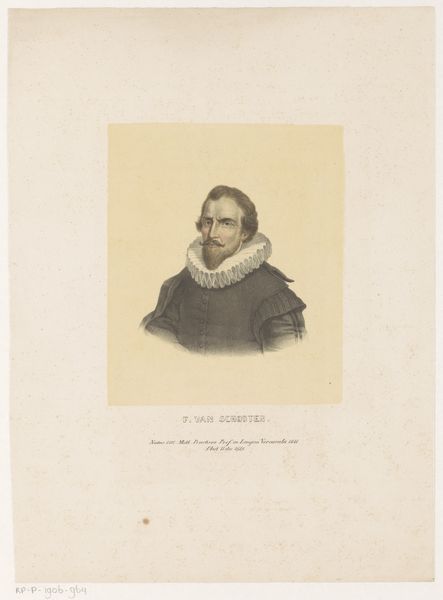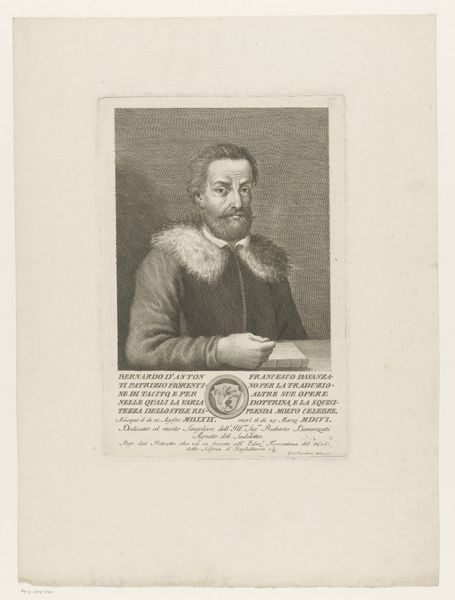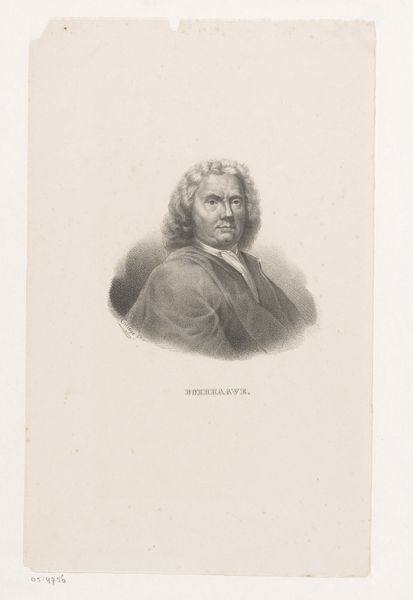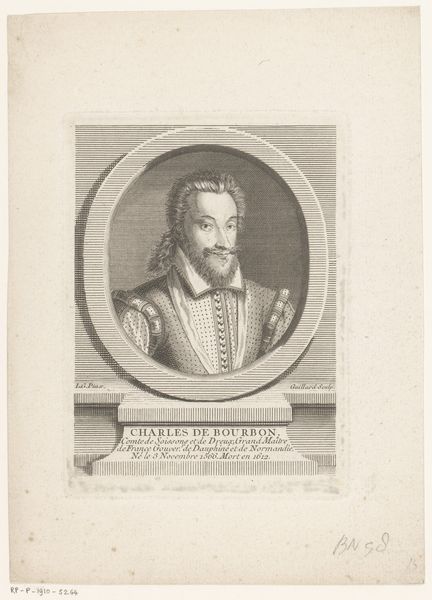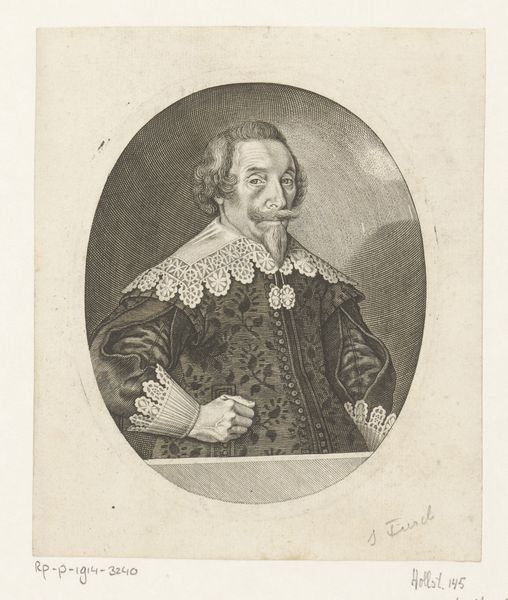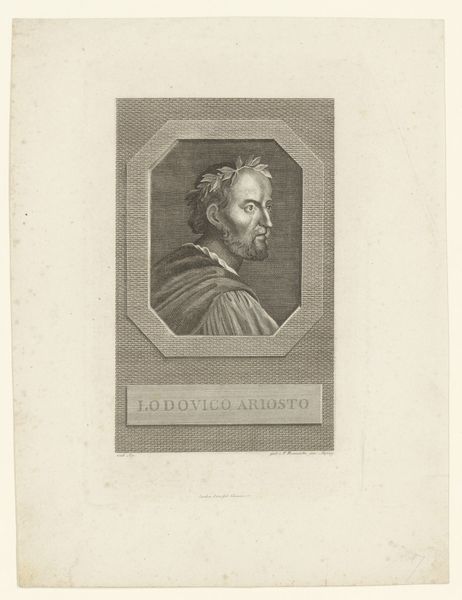
Dimensions: height 189 mm, width 124 mm
Copyright: Rijks Museum: Open Domain
Friedrich Rossmässler created this print of Anthony van Dyck, a celebrated Flemish Baroque artist, in the 18th or 19th century. The image presents Van Dyck as the archetypal artist: assured, elegant, and intellectual. Rossmässler, working in the German states, would have been deeply aware of the institutional frameworks surrounding art. Academies, museums, and printmaking workshops shaped artistic production and consumption. Reproducing and circulating images of master artists like Van Dyck served to reinforce a canon of artistic excellence, and the institutions that validated it. Who was included and excluded from this canon reflects cultural biases. The figure of the artist becomes a symbol freighted with social meaning. Historical sources, such as letters, biographies, and exhibition reviews, would help to reconstruct how images like these circulated and what kind of cultural work they performed. The meaning of art is always contingent on the context in which it is made and viewed.
Comments
No comments
Be the first to comment and join the conversation on the ultimate creative platform.
